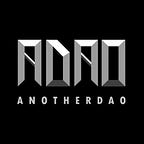DAO — Trend of 2022
- What is DAO?
As Web3 and blockchain become more widespread, new acronyms, such as DAO, are pushed about on a regular basis with no explanation as to what they signify.
A DAO, which stands for “Decentralized Autonomous Organization,” is a non-centralized community-led entity. It is totally autonomous and transparent: smart contracts establish the basic rules, execute the agreed-upon decisions, and proposals, voting, and even the code itself can be publicly inspected at any time. In order not to confuse everyone, let’s break it down:
2. Organization: a group of humans
Autonomous: refers to the ability to continue without outside help. Similar to a self-governing “autonomous” zone within a nation (i.e. Hong Kong).
Decentralized: refers to the technology that these autonomous organizations are constructed on, and is further defined in this article as Ethereum smart contracts. Organizations established on legal papers ratified by a central authority, meaning government, maybe the polar opposite of this.
In brief, a DAO is formed by a group of crypto wallets held by individuals and other organizations that conducts all of its operations through code, allowing assets and votes to be managed safely without the need for underlying legal or traditional banking structures. When compared to typical organizations, membership in a DAO may be relatively flexible, and DAOs have been used to manage assets, establish protocols, vote on community problems, and create specialty factions for interests such as digital art collecting.
3. How does it work
Smart contracts are used to construct the DAO’s rules, which are set by a core team of community members. These smart contracts set the groundwork for the DAO’s operations. They are very visible, verifiable, and publicly auditable, allowing any potential member to fully comprehend how the protocol will operate at all times.
After these rules are legally inscribed on the blockchain, the DAO must find out how to acquire financing and confer governance.
This is typically achieved through token issuance, by which the protocol sells tokens to raise funds and fill the DAO treasury.
In return for their fiat, token holders are given certain voting rights, usually proportional to their holdings. Once funding is completed, the DAO is ready for deployment.
At this point, once the code is pushed into production, it can no longer be changed by any other means other than a consensus reached through member voting. That is, no special authority can modify the rules of the DAO; it is entirely up to the community of token holders to decide.
4. The function of DAO
Each DAO has its own mission, whether it’s a one-off or part of a bigger initiative, and it may be linked to a variety of sectors.
Some are motivated by personal interests, such as the ConstitutionDAO, which came together last year in the hopes of purchasing one of the original copies of the United States Constitution from Sotheby’s. The organization eventually discovered it was not the highest bidder and lost the auction, but members received a return on their initial investment. Others have loftier ambitions, such as managing or running a firm as a collective.
The future of DAO
Due to the development of the digital world, the attention of DAO is more and more increasing. While there are numerous unanswered questions and possible challenges about legality, security, and structure, some experts and investors predict that this sort of organization could eventually gain traction, maybe even replacing traditionally constituted organizations.
💥Follow us:
🔖 Website: https://anotherdao-exchange.web.app/
🔖 Telegram: https://t.me/AnotherDAO
🔖 Discord: https://discord.gg/NEPHnx793F
🔖 Medium: https://anotherdao.medium.com/
🔖 Facebook: https://www.facebook.com/anotherdao/
🔖 Twitter: https://twitter.com/Another_DAO
🔖Gitbook: https://anotherswap.gitbook.io/another-swap/
🔖Reddit: https://www.reddit.com/user/AnotherDAO_finance22/posts/
